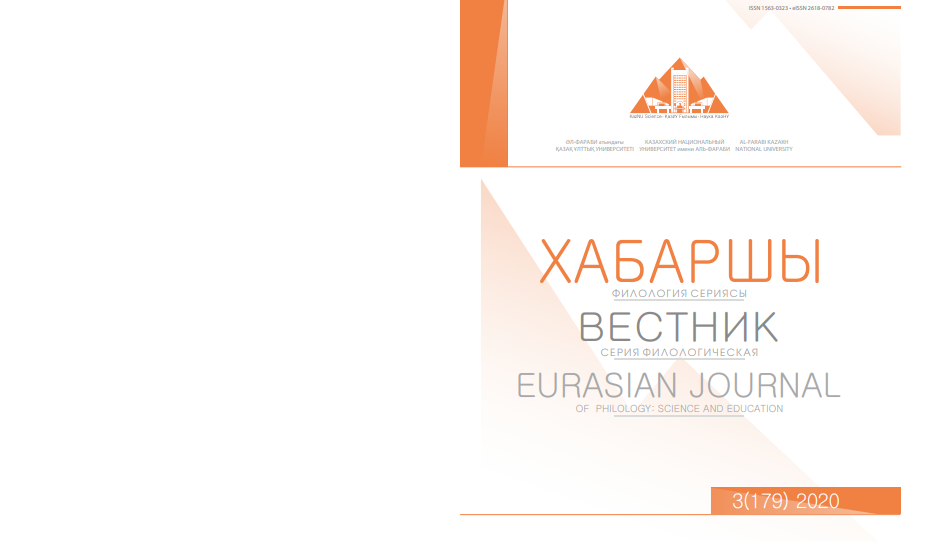Study on the Meaning Category of Time Adverbs in Modern Kazakh Language in Domestic and Foreign Studies
DOI:
https://doi.org/10.26577/EJPh.2020.v179.i3.ph13Abstract
Time and space are fully embodied in all levels of language. Quantitative concepts closely related to human nature belong to adverbs from a lexical level. Adverbs closely connected with this concept written in the works of foreign scholars studying in Kazakh linguistics and Kazakh language are mentioned. Although the classification principle is the same in terms of semantics, it is proved that it also has particular characteristics. In the works of most foreign scholars, we can clearly perceive that adverbs semantically regarded as a separate vocabulary-semantic group are classified in the grammatical category of “time” and tense. In Zhang Yisheng’s “The Exploration of Adverbs in Modern Chinese”(2004), we learned that time adverbs are studied from the direction of functional grammar. In Kazakh linguistics, it is researched and systematized according to the categories of non-part-of-speech concepts. According to the experiment, there are certain differences in the selection and usage of language units among interviewees under cognitive conditions. The results concluded in this paper give further analysis. Firstly, time adverbs are divided into adverbs of time, frequency and sequence. Among them, adverbs of time can be further divided into adverbs of tense and adverbs of aspect; adverbs of frequency can be divided into high frequency, middle frequency, and low frequency adverbs; adverbs of sequence can be divided into adverbs of order and adverbs of repetition. Generally speaking, the classification of time adverbs between Chinese and Kazakh scholars is similar, but there are differences in research directions.






